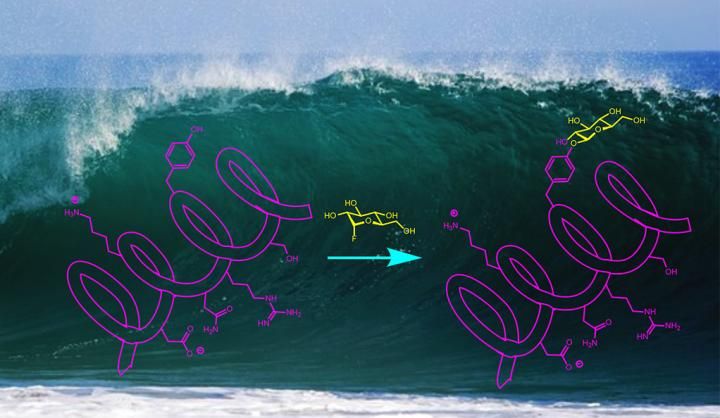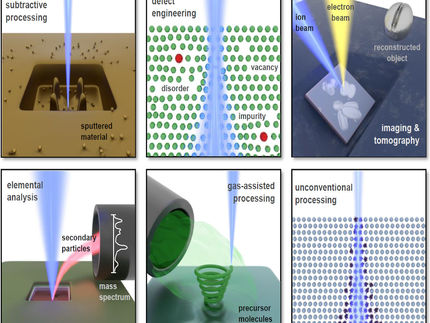Agilent Technologies presents Europhysics Prize for pioneering work with carbon nanotubes
BRIGHTON, England, April 11, 2002 Agilent Technologies Inc. today presented the Agilent Technologies Europhysics Prize for Outstanding Achievement in Condensed matter Physics to four scientists for their pioneering work in the study of carbon nanotubes. The award was presented at a general conference of the European Physical Society (EPS). Agilent's Roberto Favaretto, vice president and general manager, Europe/Middle East/Africa, presented the 2001 award to Sumio Iijima, Cees Dekker, Thomas W. Ebbesen and Paul L. McEuen for the discovery of multi- and single-walled carbon nanotubes and pioneering studies of their fundamental mechanical and electronic properties. "The Agilent Technologies Europhysics Prize demonstrates our commitment to fundamental contributions in scientific areas essential to Agilent's future," said Favaretto. "These researchers have made a key contribution by creating an entirely new field in condensed matter physics -- a field at the intersection of nanoscience, nanotechnology and molecular electronics." Since 1975, the award has been given to leading scientists in nearly every internationally important area of condensed matter physics. The award is one of the most prestigious prizes given by the EPS. In the past, eight recipients have gone on to win the Nobel Prize in physics or chemistry. Agilent has taken over the tradition from Hewlett-Packard Company of funding the prize by annual donations to the EPS. The Agilent Technologies Europhysics prize includes a cash award of 51,000 Swiss Francs and is given in recognition of scientific excellence in basic or applied research in the physics of solids and liquids, with particular emphasis on recent work that leads to advances in the fields of electronic, electrical and materials engineering. A committee appointed by the EPS, which includes Jim Hollenhorst, the director of the Electronic Research Laboratory at Agilent Laboratories, selects the recipient. The history of this year's award dates back to 1991, when Dr. Sumio Iijima discovered carbon nanotubes, cylindrical molecules with a diameter as small as a nanometer and a length up to many microns. Two years later, Dr. Iijima and T. Ichibashi succeeded in synthesizing single wall nanotubes. Since then, nanotubes have been found to possess remarkable physical properties that offer amazing possibilities in the creation of future nanoelectronics devices, circuits and computers. In 1996, Thomas Ebbesen and co-workers produced larger quantities of purified nanotubes and demonstrated that they are the stiffest known material with great potential for reinforced composites and nanoelectromechanical systems (NEMS). In 1997, the groups led by Cees Dekker and Paul McEuen reported equally remarkable electrical properties; namely, that nanotubes are one-dimensional conductors with either conducting or semiconducting properties, depending on their atomic structure. Both groups later demonstrated novel devices, including the first single-molecule nanotube transistors and molecular diodes, which have potential application in nanoelectronics. Agilent Technologies' philanthropy programs, which funded the award, sponsor equipment grants and inquiry into research and technologies that address Agilent's strategic focus in the areas of telecommunications and life sciences. Information about the philanthropy programs is available on the Web at www.agilent.com/univ_relation and www.agilent.com/philanthropy.
Most read news
Other news from the department science

Get the chemical industry in your inbox
By submitting this form you agree that LUMITOS AG will send you the newsletter(s) selected above by email. Your data will not be passed on to third parties. Your data will be stored and processed in accordance with our data protection regulations. LUMITOS may contact you by email for the purpose of advertising or market and opinion surveys. You can revoke your consent at any time without giving reasons to LUMITOS AG, Ernst-Augustin-Str. 2, 12489 Berlin, Germany or by e-mail at revoke@lumitos.com with effect for the future. In addition, each email contains a link to unsubscribe from the corresponding newsletter.
Most read news
More news from our other portals
Last viewed contents
Greiner Bio-One BioScience - established and successful world-wide
LIGA
Caldeira-Leggett_model
Vortex_tube

A new formula for creating chemical reactions -- with carbs - New approach to glycosylation that is remarkably simple and works in water at room temperature
Carbon nanotubes twice as strong as once thought


























































